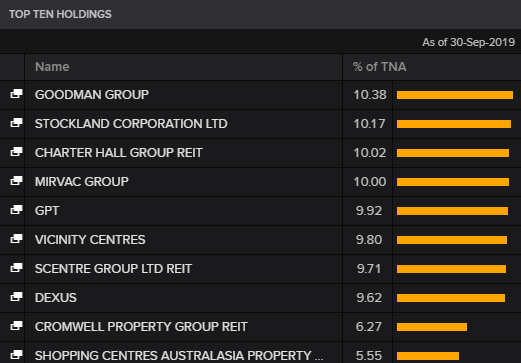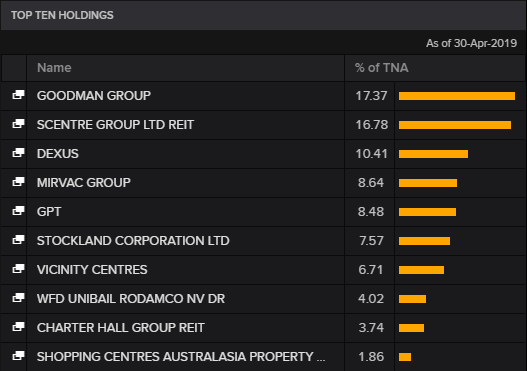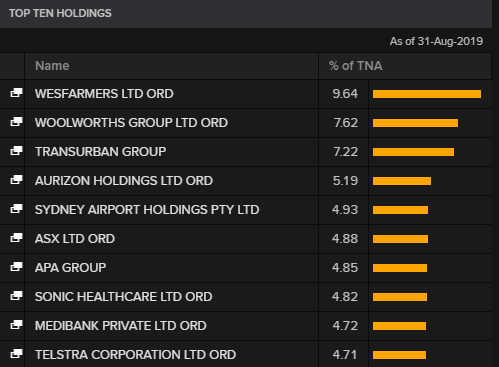In todayâs dynamic world, investors want high returns as soon as possible without wanting to lose any of the principal amount they have invested. This is the reason why many investors are always on the lookout for investment plans where they can double their money in a few years with little or no risk. However, there is no such investment product that can deliver a high return without any risk. The risks and returns are directly correlated to each other; higher the risk, higher is the return. So, while selecting the investment, one must look at how much risk they can assume to get to the desired results. We are going to talk about one of the financial products available in the market- Exchange Traded Funds (ETFs).
Exchange Traded Funds (ETFs) are one of the most important and popular products created for individual investors in recent years. They offer many benefits if utilized wisely. They constitute a preferred choice for achieving the investorâs long-term goals.
What Are ETFs?
ETFs offer investors a way to channelize their money in a fund that makes investments in bonds, stocks, commodities or any other financial assets or by a combination of these and, receive a return in the form of dividends or capital gains. ETFs are collection of securities, like commodities, stocks, or bonds, that is intended to mimic an underlying index. ETF shares are traded throughout the day on stock exchanges and at market prices close to the NAV of the underlying securities.
History of ETFs:
- Exchange traded funds, or ETFs, were first developed in the 1990s to provide access to passively managed index funds to individual investors;
- Since its inception, the ETF market has grown enormously and are now used by all types of investors around the world;
- ETFs now represent everything from broad market indices to niche sectors or alternative asset classes.
- Market ETFs:Designed to track an index like the S&P/ASX 200 or S&P/ASX 300, etc;
- Bond ETFs:Designed to provide exposure to virtually every type of bond available in the market.
- Sector and industry ETFs:Designed to track particular industries such as high technology industries, pharmaceuticals, oil, etc.
- Commodity ETFs:Designed to track the price of a commodity, such as gold, oil, or corn, etc;
- Style ETFs:Designed to track an investment style or market capitalization focus, such as large-cap value or small-cap growth, etc;
- Foreign market ETFs:Designed to track non-Australian markets, such as Japanâs Nikkei Index or Hong Kongâs Hang Seng index
- Inverse ETFs:Designed to profit from a decline in the underlying market or index;
- Actively managed ETFs: Designed to outperform any index, unlike most ETFs, which are designed to track an index;
- Exchange-traded notes: Created to provide access to illiquid markets and have the added benefit of generating virtually no short-term capital gains and consequently, taxes;
- Alternative investment ETFs:Innovative structures, such as ETFs that allow investors to trade volatility or gain exposure to a particular investment strategy targeted at alternative assets like bullion, oil, metals, etc.
Advantages of ETFs
The appeal of ETFs to individual investors is:
- Buy and sell at any time of the day: Mutual funds, in contrast, settle after the market close;
- Lower fees: There is no sales load, however, brokerage commissions do apply;
- More tax-efficient: Investors have better control over when they pay as capital gains tax;
- Trading transactions: Because they are traded like stocks, investors can place a variety of types of orders (limit orders, stop-loss orders, buy on margin) which are not possible with mutual funds.
Disadvantages of ETFs
While superior in many respects, ETFs do have drawbacks, including:
- Trading costs: If you invest small amounts frequently, there may be lower-cost alternatives like investing directly with a fund company in a no-load fund;
- Illiquidity: Some thinly traded ETFs have wide bid/ask spreads, which means youâll be buying at the high price of the spread and selling at the low price of the spread;
- Tracking error: While ETFs generally track their underlying indices well, technical issues can create discrepancies
Letâs look at some well-known ETFs trading on the ASX
- VanEck Vectors Australian Property ETF
The Fund invests in a diversified portfolio of ASX-listed securities with the aim of providing investment returns (before management costs) that closely track the returns of the MVIS Australia A-REITs Index (ASX:MVA). The index is an Australian sectoral index based on pure-play rules. The fund mimics the performance of the most liquid and largest Real Estate Investment Trusts (A-REITs) listed on the ASX.

Top ten Holdings Source: Thomas Reuters
- Vanguard Australian Property Securities Index ETF
The investment objective is to match the return (income and capital appreciation) of the S&P/ASX 300 A-REIT Index before considering fund fees and expenses. The Fund provides a low-cost way to invest in a portfolio of Australian real estate investment trusts (A-REITs) listed on the Australian Securities Exchange (ASX) across the retail, office, industrial, tourism, and infrastructure sectors.

Top ten Holdings Source: Thomas Reuters
- UBS IQ Morningstar Australia Dividend Yield ETF
The Fund aims to replicate the performance of the Morningstar Australia Dividend Yield Focus Index before fees and expenses, this Fund is an exchange traded fund (ETF) which is a registered managed investment scheme and can be traded on the ASX. This Fund allows investors to gain exposure to a diversified portfolio of listed Australian securities that, are forecast to offer sustainable income via the distribution of franking credits and dividends and provides investors with the flexibility of listed securities along with the benefits of a managed fund.

Top ten Holdings Source: Thomas Reuters
Investment in the ETFs can be considered as a good option for the investors looking for regular income at low costs, adequate liquidity and minimum risk. Moreover, the investors have the option of investing in multiple sectors through ETFs and trade them like equities in the market.
Disclaimer
This website is a service of Kalkine Media Pty. Ltd. A.C.N. 629 651 672. The website has been prepared for informational purposes only and is not intended to be used as a complete source of information on any particular company. Kalkine Media does not in any way endorse or recommend individuals, products or services that may be discussed on this site. Our publications are NOT a solicitation or recommendation to buy, sell or hold. We are neither licensed nor qualified to provide investment advice.



